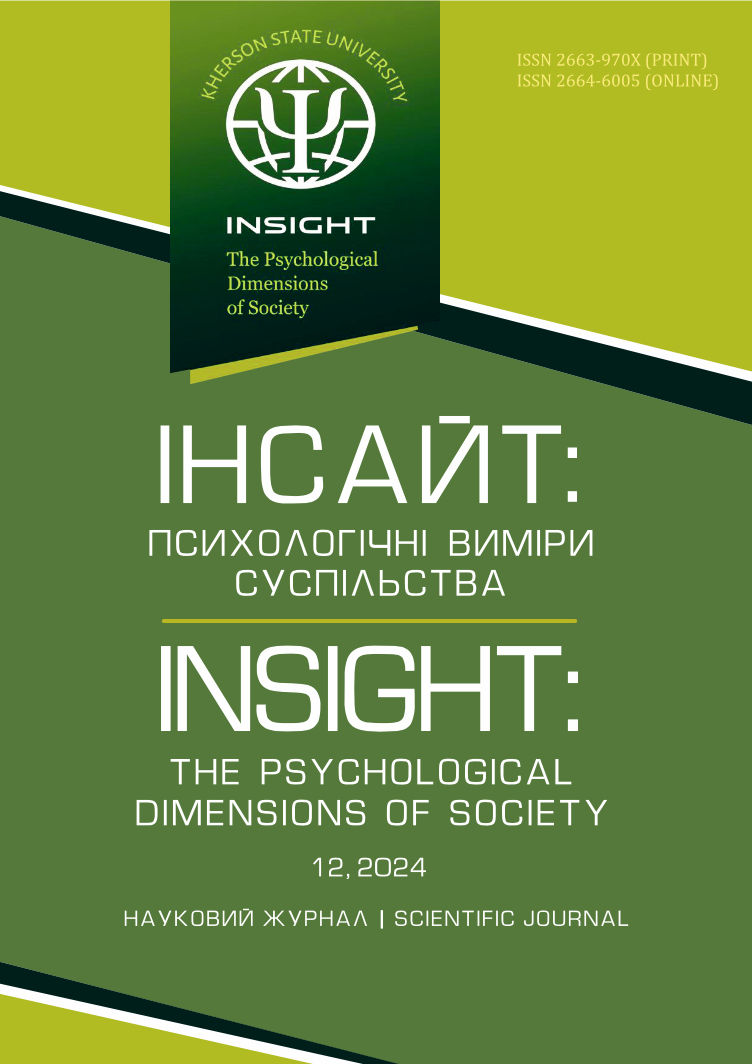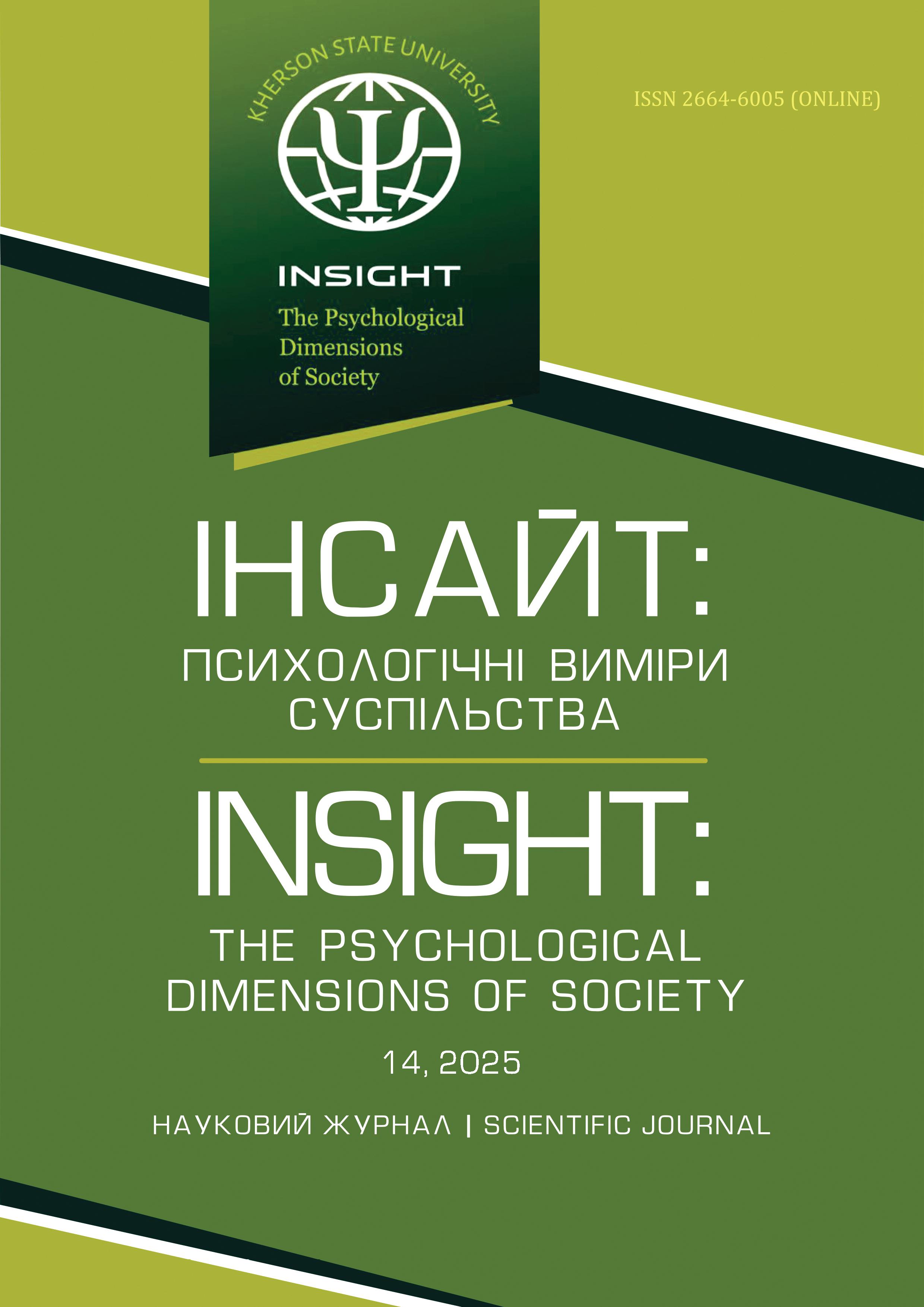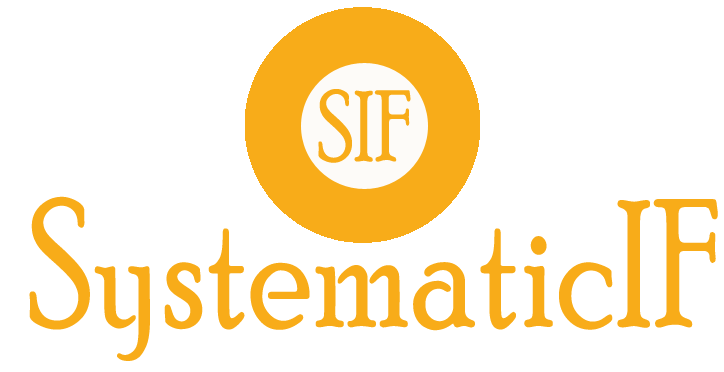Research on Relationships Between Self-Esteem and Social Activeness of Young People: Gender Differentiation Exemplified by the Kazakhstan-Uzbekistan Sample
Abstract
The aim is to conduct theoretical-empirical research into peculiarities of the inclusion of self-esteem in the organization of social activeness of young people. Methods. The research participants were young students from Kazakhstan and Uzbekistan, aged from 18 to 26 years (n = 133). Valid and reliable psycho-diagnostic tools were applied: the self-esteem questionnaire (SQ) (Weinhold & Hilferty, 1983); methods for diagnosing social-psychological attitudes of an individual in the sphere of motivation and needs (SPAI) (Potemkina, 2001); the questionnaire “Diagnostics of motivators of an individual’s social-psychological activeness” (DMISPA) (Fetiskin et al., 2002). Results. It was found that the majority of respondents have a medium level of self-esteem which is a normotypical level of its adequacy. The only direct correlation between power orientation and the ability to make contacts (R = .176; p = .043) was established. The only inverse correlation of the general need for achievement with the art of self-acceptance (R = -.252; p = .003) suggests that young people lose in achieving success with an increase in attention to their personality. Comparison of the parameters of social activeness between the samples of males (Group 1) and females (Group 2) revealed the only superiority of Group 2 in the parameter “work orientation” (U = 1603.500; p = .012). Discussion and conclusions. It was substantiated that young people are considerably affected by the opinions of significant others regarding their personality. It was emphasized that a correlation between the general need for achievement with the art of self-acceptance demonstrates the self-actualization tendencies of young people aimed at impacting global social processes. There is a caveat that it may also hide a pragmatic component with hedonistic behavioral patterns. It was explained that the females’ sample is more process-oriented and focused on everyday responsibilities, which determined a significant difference in the parameter “work orientation”. It was summarized that the obtained results possess scientific value and can be of interest to anyone who works with young people. It was substantiated that the level of self-esteem has an impact on the parameters and orientation of social activeness.
Downloads
References
Abrar-ul-Hassan S., Safdar G. Relationship between Self-Esteem and Problematic Use of Facebook among University Students. Annals of Social Sciences and Perspective. 2022. Vol. 3(1). P. 199–217. https://doi.org/10.52700/assap.v3i1.83
Adila I., Huzili H., Mohamad R. H., Yasmin A., Husna Afifi M. Y., Abdul Rahman A. M. Conceptual paper: The roles of locus of control, self-esteem, resilience, and religion towards drug abuse intention among young people. AIP Conference Proceedings. 2021. Vol. 2339(1). 020110. https://doi.org/10.1063/5.0044231
Agren K. A., Hemmingsson H., Kjellberg A. Internet activities and social and community participation among young people with learning disabilities. British Journal of Learning Disabilities. 2023. Vol. 51. P. 125–134. https://doi.org/10.1111/bld.12519
Amedy A., Barrantes-Vidal N. A., Kwapil T. R., Monsonet M. A psychosocial pathway to paranoia: The interplay between social connectedness and self-esteem. Schizophrenia Research. 2023. Vol. 3(254). P. 199–207. https://doi.org/10.1016/j.schres.2023.03.006
Ауельбекова Н., Ахтаева Н. Социально-психологические факторы самооценки в студенческом возрасте. Вестник. Серия “Психология”. 2023. № 76(3). P. 1–7. https://doi.org/10.51889/2959-5967.2023.76.3.007
Blynova O., Derevianko S., Ivanova O., Popovych I., Estay Sepulveda J. G. Professional relevance of potential labor emigrants. Revista Notas Históricas y Geográficas. 2022a. Vol. 29. P. 88–106. https://www.revistanotashistoricasygeograficas.cl/index.php/nhyg/article/view/435
Blynova O., Popovych I., Hulias I., Radul S., Borozentseva T., Strilets-Babenko O., Minenko O. Psychological safety of the educational space in the structure of motivational orientation of female athletes: a comparative analysis. Journal of Physical Education and Sport. 2022b. Vol. 22(11). P. 2723–2732. https://doi.org/10.7752/jpes.2022.11346
Cicek I. Mediating Role of Self-Esteem in the Association between Loneliness and Psychological and Subjective Well-Being in University Students. International Journal of Contemporary Educational Research. 2022. Vol. 8(2). P. 83–97. https://doi.org/10.33200/ijcer.817660
Cook J. L., Elzinga B., Van Schie C. A boost in self-esteem after positive social evaluation predicts social and non-social learning. Royal Society Open Science. 2023. Vol. 5(10). P. 24–39. https://doi.org/10.1098/rsos.230027
Dalgiç A. I., Karataş N., Kaya A. The effect of individual values on self-esteem and meaning in life in adolescents: A cross-sectional study from Turkey. Archives of Psychiatric Nursing. 2023. Vol. 7(46). P. 8–13. https://doi.org/10.1016/j.apnu.2023.06.007
Doyle I., Catling J. C. The Influence of Perfectionism, Self-Esteem and Resilience on Young People’s Mental Health. The Journal of Psychology. 2022. Vol. 156(3). P. 224–240. https://doi.org/10.1080/00223980.2022.2027854
Falk A., Kosse F., Schildberg-Hörisch H., Zimmermann F. Self-assessment: The role of the social environment. Journal of Public Economics. 2023. Vol. 14(223). P. 179–191. https://doi.org/10.1016/j.jpubeco.2023.104908
Farrell A. H., Vaillancourt T. Joint trajectories of adolescent narcissism and self-esteem predict interpersonal features in young adulthood. Journal of Research in Personality. 2021. Vol. 9(93). P. 1–88. https://doi.org/10.1016/j.jrp.2021.104127
Фетискин Н. П., Козлов В. В., Мануйлов Г. М. Социально-психологическая диагностика развития личности и малых групп. Москва: Инcтитут психотерапии, 2002. 490 с. URL: https://f.eruditor.link/file/1803803/
Forest A. L., Sigler K. N., Bain K. S., O’Brien E. R., Wood J. V. Self-esteem’s impacts on intimacy-building: Pathways through self-disclosure and responsiveness. Current Opinion in Psychology. 2023. № 4(52). P. 108–122. https://doi.org/10.1016/j.copsyc.2023.101596
Gan T., Huang P., Li B., Lin W., Liu Y., Yang S. The relationship of negative life events, trait-anxiety and depression among Chinese university students: A moderated effect of self-esteem. Journal of Affective Disorders. 2023. Vol. 2(339). P. 384-391. https://doi.org/10.1016/j.jad.2023.07.010
Gao W., Luo Y., Cao X., Liu X. Gender differences in the relationship between self-esteem and depression among college students: a cross-lagged study from China. Journal of Research in Personality. 2022. Vol. 97. P. 104202. https://doi.org/10.1016/j.jrp.2022.104202
Gehrmann S., Wicker P. The effect of regional and social origin on health-related sport and physical activity of young people in Europe. European Journal for Sport and Society. 2021. Vol. 19(2). P. 117–134. https://doi.org/10.1080/16138171.2021.1916223
Goodyear V. A., Wood G., Skinner B., Thompson J. L. The effect of social media interventions on physical activity and dietary behaviours in young people and adults: a systematic review. International Journal of Behavioral Nutrition and Physical Activity. 2021. Vol. 18(72). https://doi.org/10.1186/s12966-021-01138-3
Halian I., Popovych I., Hulias I., Serbin Iy., Vyshnevska O., Kovalchuk Z., Pyslar A. Correlation between personality traits of young athletes and their level of self-efficacy. Journal of Physical Education and Sport. 2023a. Vol. 23(5). P. 1119–1129. https://doi.org/10.7752/jpes.2023.05140
Halian I., Popovych I., Vovk V., Kariyev A., Poleshchuk L., Halian O. Correlation of the coach’s qualities and junior athletes’ self-efficacy. Journal of Physical Education and Sport. 2023b. Vol. 23(7). P 1621–1630. https://doi.org/10.7752/jpes.2023.07199
Harris M. A., Orth U. The Link Between Self-Esteem and Social Relationships: A Meta-Analysis of Longitudinal Studies. Journal of Personality and Social Psychology. 2019. Vol. 6(63). P. 2–15. http://dx.doi.org/10.1037/pspp0000265
Hepper E. G. Self-esteem. Encyclopedia of Mental Health (Third Edition). 2023. Vol. 5. P. 125–139. https://doi.org/10.1016/B978-0-323-91497-0.00185-5
Homola S. Y., Oros L. B. Attachment, Self-esteem, and Social Self-expression Skills: A Causal Chain Model in Young People and Adolescents. Actualidades En Psicología. 2023. Vol. 37(134). P. 85–98. https://doi.org/10.15517/ap.v37i134.53536
Hudimova A., Popovych I., Savchuk O., Liashko V., Pyslar A., Hrys A. Research on the relationship between excessive use of social media and young athletes’ physical activity. Journal of Physical Education and Sport. 2021. Vol. 21(6). P. 3364–3373. https://doi.org/10.7752/jpes.2021.06456
Imankulova I. A., Kudaibergenova S. K. Women’s body image satisfaction: connection with age and self-esteem. The Journal of Psychology & Sociology. 2021. Vol. 77(2). P. 28–37. https://doi.org/10.26577/JPsS.2021.v77.i2.04
Koski P., Hirvensalo M., Villberg J., Kokko S. Young People in the Social World of Physical Activities: Meanings and Barriers. International Journal of Environmental Research and Public Health. 2022. Vol. 19(9). P. 5466. https://doi.org/10.3390/ijerph19095466
Liu X., Cao X., Gao W. Does low self-esteem predict anxiety among Chinese college students? Psychology Research and Behavior Management. 2022. Vol. 15. P. 1481–1487. https://doi.org/10.2147/PRBM.S361807
McClelland D. C., Atkinson J. W., Clark R. A., Lowell E. L. The achievement motive. Appleton-Century-Crofts. 1953. 333 p. https://doi.org/10.1037/11144-000
Maenhout L., Melville C. A. Unravelling the link between physical activity and peer social connectedness in young people with intellectual disabilities: a systematic review of quantitative studies. Journal of Intellectual Disability Research. 2024. Vol. 68. P. 95–112. https://doi.org/10.1111/jir.13095
Monserrat M., Arjona Á., Checa J. C., Tarifa J., Salguero D. Teachers’ Knowledge and Experiences after the Implementation of an Eating Disorder Prevention Program in the Physical Education Classroom. Education Sciences. 2024. Vol. 14(5). P. 467. https://doi.org/10.3390/educsci14050467
Murad O. S. Social Anxiety in Relation to Self-Esteem among University Students in Jordan. International Education Studies. 2020. Vol. 13(2). P. 96–103. https://doi.org/10.5539/ies.v13n2p96
Popovych I., Kurova A., Koval I., Kazibekova V., Maksymov M., Huzar V. Interdependence of emotionality, anxiety, aggressiveness and subjective control in handball referees before the beginning of a game: a comparative analysis. Journal of Physical Education and Sport. 2022. Vol. 22(3). P. 680–689. https://doi.org/10.7752/jpes.2022.03085
Prokhorenko L., Popovych I., Sokolova H., Chumaieva Yu., Kosenko Yu., Razumovska T., Zasenko V. Gender differentiation of self-regulating mental states of athletes with disabilities: comparative analysis. Journal of Physical Education and Sport. 2023. Vol. 23(2). P. 349–359. https://doi.org/10.7752/jpes.2023.02042
Потемкина О. Ф. Методика диагностики социально-психологических установок личности в мотивационно-потребностной сфере. Практическая психодиагностика. Методики и тесты. Самара, 2001. С. 641–648. URL: https://z-lib.io/book/16612586
Shen X., Yan Q., Ying L., Yu S. Self-esteem moderates the effect of acute stresses on individuals’ trust behaviors. Personality and Individual Differences. 2023. Vol. 8(215). P. 201–212. https://doi.org/10.1016/j.paid.2023.112376
Vasilieva E. N., Vasiliev E. S., Poltavskaya M. B. Transformation of Economic Activity in the Digital Era: Practices for Generating Income by Young People in Social Networks. In: Popkova, E.G., Sergi, B.S. (eds) “Smart Technologies” for Society, State and Economy. ISC 2020. Lecture Notes in Networks and Systems. 2021. Vol. 155. Springer, Cham. https://doi.org/10.1007/978-3-030-59126-7_77
Weinhold B. K., Hilferty J. The self-esteem matrix: a tool for elementary counselors. Elementary School Guidance & Counseling. 1983. Vol. 17(4). P. 243–251. http://www.jstor.org/stable/24009064
Authors who publish with scientific journal agree to the following terms:
• All scientific papers may be freely copied and distributed on any medium and in any format, provided that the references to the initial data of the scientific work are indicated.
• Authors retain copyright and grant the journal right of first publication with the work simultaneously licensed Creative Commons Attribution License .
• Authors are able to enter into separate, additional contractual arrangements for the non- exclusive distribution of the journal’s published version of the work (institutional repository, your website, monograph), with an acknowledgement of its initial publication in this journal.





































